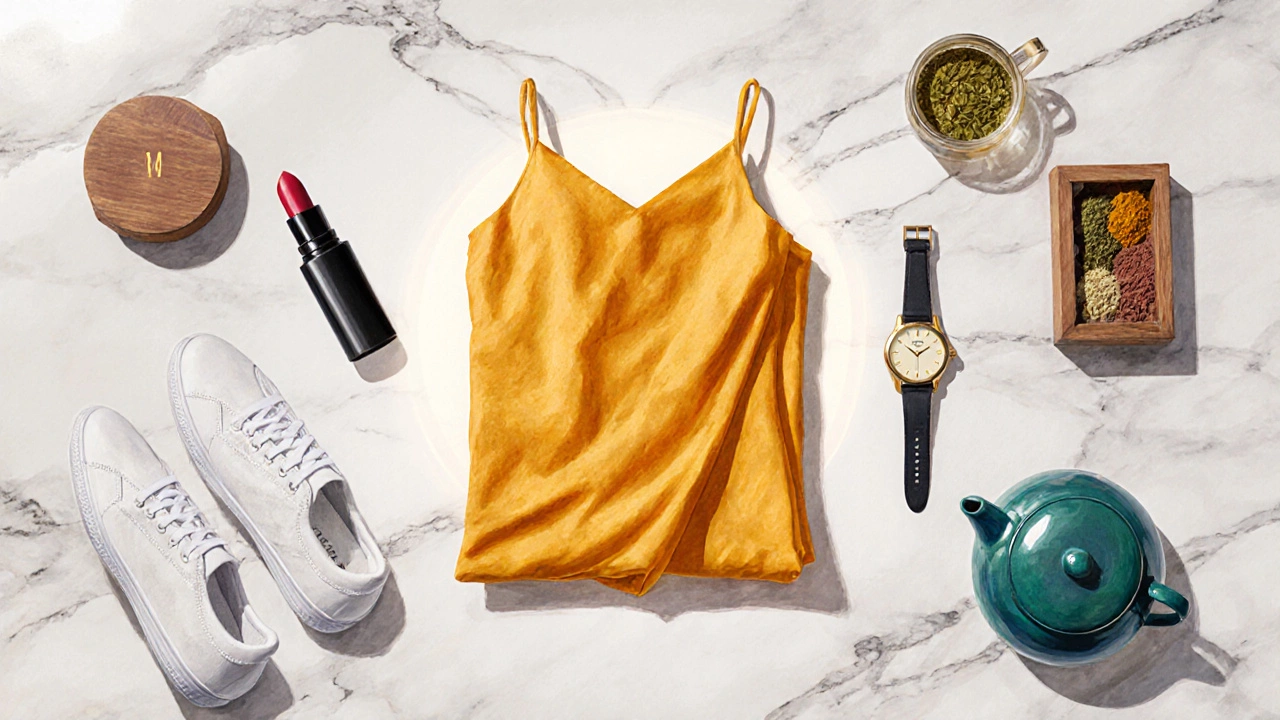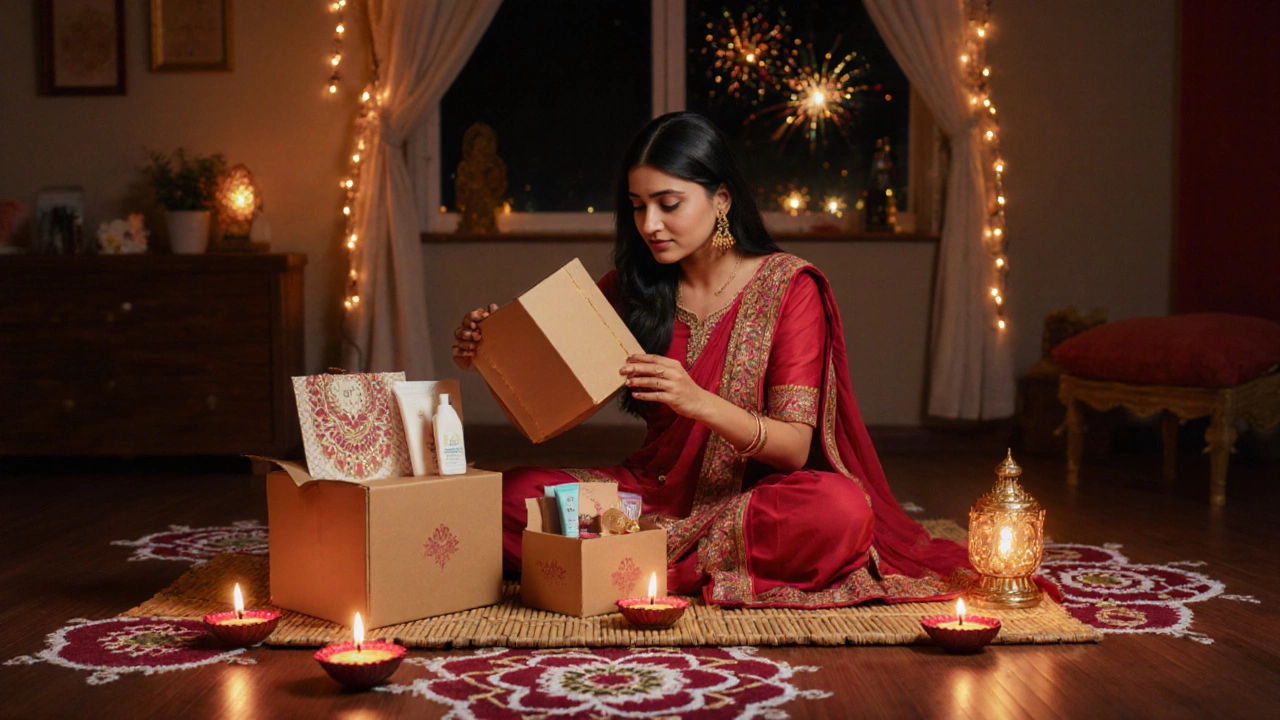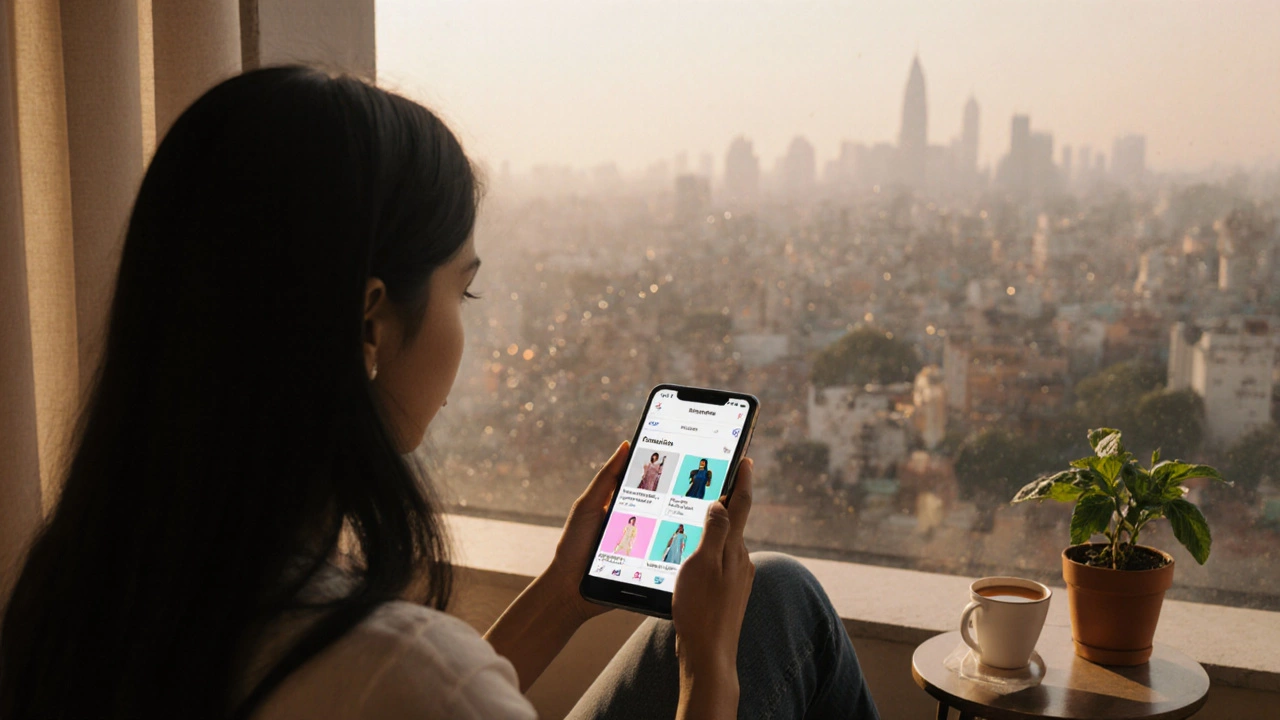Women's Online Shopping Calculator
Calculate Your Market Potential
Estimate how many women would purchase products across different categories based on the latest 2025 data.
When analyzing Indian e‑commerce, female online shoppers in India are a demographic that makes up nearly half of all online buyers and follows distinct product‑category trends. Understanding what they buy the most helps brands fine‑tune ads, stock the right SKUs, and boost conversion rates.
Key Takeaways
- Clothing & fashion leads with about 38% of female spend, driven by fast‑fashion apps.
- Beauty & personal care follows at 22%, with skin‑care topping the list.
- Health & wellness, footwear, and accessories together account for another 30% of purchases.
- Metro cities dominate the top‑spend segment, but tier‑2 & tier‑3 markets are rapidly catching up, especially in home & kitchen items.
- Seasonal festivals (Diwali, Eid, Navratri) trigger 2‑3× spikes in apparel and beauty sales.
Who Are Female Online Shoppers in India?
According to the 2024 India Internet Survey, 48% of internet users are women, and 61% of them have made at least one online purchase in the past six months. The average age sits between 22‑38, with a noticeable rise in the 45‑54 bracket as digital literacy spreads to smaller towns.
Key attributes of this group include:
- Smartphone‑first shoppers - 79% browse via mobile apps.
- Price‑sensitive yet brand‑aware - discounts matter, but they still seek authentic reviews.
- Social‑media influenced - Instagram and WhatsApp referrals drive 34% of first‑time purchases.
Top Product Categories Women Buy Online
The following table captures the latest 2025 data from payment‑gateway aggregators and major marketplaces.
| Category | % of Female Purchases | Average Spend per Order (INR) | Leading Platforms |
|---|---|---|---|
| Clothing & Fashion | 38% | 1,850 | Myntra, Ajio, Amazon |
| Beauty & Personal Care | 22% | 1,120 | Nykaa, Amazon, Flipkart |
| Health & Wellness | 9% | 1,540 | HealthKart, Amazon |
| Footwear | 8% | 2,200 | Myntra, Flipkart |
| Accessories | 5% | 1,300 | Amazon, Myntra |
| Home & Kitchen | 6% | 2,750 | Amazon, Flipkart |
| Maternity & Baby | 4% | 2,500 | FirstCry, Amazon |
| Other (Books, Gadgets, Groceries) | 8% | 1,650 | Amazon, Flipkart |

Regional Nuances: Metro vs. Tier‑2/3
In metros like Delhi, Mumbai, and Bengaluru, the average basket size for women is INR 2,950, with fashion accounting for 44% of that spend. In tier‑2 cities (e.g., Pune, Jaipur), beauty products surge to 28% of female purchases, while home & kitchen items rise to 12% because of increasing household formation.
Tier‑3 towns such as Bhopal and Aligarh show a notable jump in health & wellness purchases (up 14% YoY), driven by mobile health‑app promotions.
Seasonal & Event‑Driven Spikes
Festivals remain the biggest sales catalyst. Data from the last three Diwali seasons shows:
- Clothing sales jump 2.8× compared to the non‑festive month.
- Beauty & personal care spikes 2.3×, with skin‑care bundles leading.
- Home & kitchen sees a 1.9× rise, as women shop for décor and appliances.
Beyond festivals, the “Women’s Day” (March 8) and “Back‑to‑College” period (July‑August) trigger short‑term spikes in accessories and maternity categories.
Drivers Behind Female Purchase Decisions
Three core factors shape what women buy online:
- Convenience - fast delivery (under 48h) is now an expectation, especially for beauty and fashion.
- Trust - verified reviews, easy returns, and authentic certifications (e.g., “Ayurvedic” labels) sway decisions.
- Social Proof - influencer endorsements and user‑generated content during festivals lift conversion rates by 18% on average.

How Sellers Can Capitalise on These Insights
If you run a brand or marketplace, here’s a quick action plan:
- Prioritise inventory for clothing & beauty during Q3-Q4 to catch the Diwali rush.
- Use carousel ads on Instagram and TikTok featuring real‑user videos - they outperform static ads by 27% among women aged 25‑34.
- Offer free‑sample kits for skin‑care during the first week of March to tap Women’s Day sentiment.
- Enable cash‑on‑delivery and easy‑return policies; a 2025 report shows 31% of female shoppers still prefer COD for high‑ticket items.
- Leverage regional festivals (e.g., Ganesh Chaturthi in Maharashtra) with localized banners and language.
Checklist for Merchants Targeting Female Buyers
- ✔️ Mobile‑optimised product pages with high‑resolution images.
- ✔️ Detailed size guides and virtual try‑on tools for fashion.
- ✔️ Ingredient transparency for beauty items (e.g., cruelty‑free badge).
- ✔️ Fast‑shipping promise (48h or less) displayed prominently.
- ✔️ Clear return policy - at least 30days free return.
- ✔️ Influencer collaborations scheduled around major festivals.
- ✔️ Tier‑specific pricing - offer metro‑friendly discounts and tier‑2 bundles.
Frequently Asked Questions
Which product category has the highest growth rate among women shoppers?
Health & wellness shows the fastest YoY growth at 19% for female buyers, driven by supplements and fitness accessories.
Do women in tier‑2 cities prefer mobile apps over websites?
Yes, 71% of tier‑2 female shoppers use mobile apps as their primary channel, compared to 58% in metros.
How important are influencer reviews for beauty products?
Influencer reviews boost conversion by an average of 28% for skin‑care and makeup items, especially when the influencer’s follower count exceeds 500k.
What payment method do women most frequently use?
UPI dominates, accounting for 45% of transactions, followed by credit/debit cards at 32% and COD at 23%.
Are there any emerging niches women are starting to buy?
Sustainable fashion and eco‑friendly personal care are rapidly rising, with a 34% increase in searches for "organic" and "reusable" products among female users in 2025.

